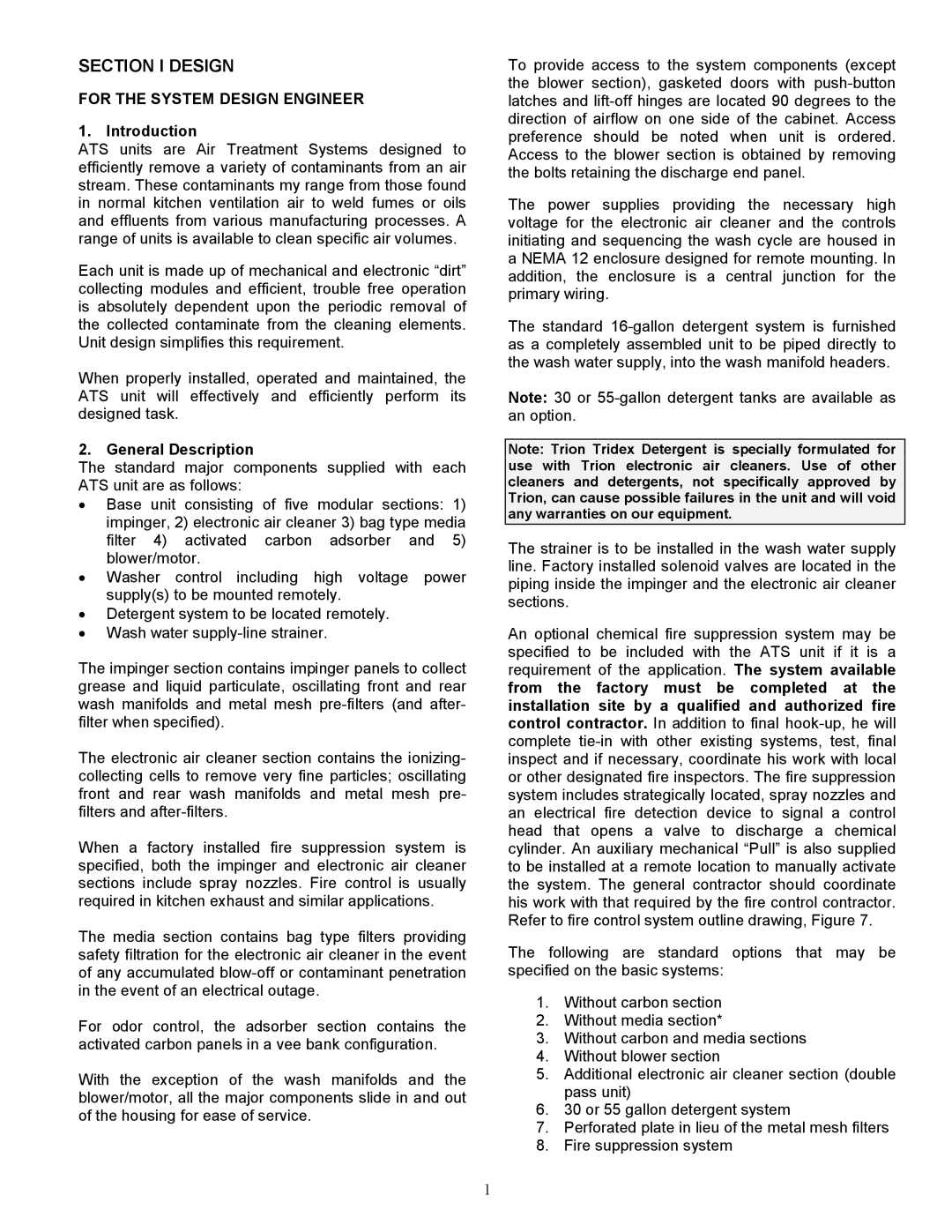147207-001, Air Boss ATS specifications
The Trion Air Boss ATS, model number 147207-001, represents a significant advancement in air quality management technology, designed to cater to both residential and commercial environments. This innovative air purification system combines state-of-the-art features with cutting-edge technologies to ensure optimal air quality.At the heart of the Trion Air Boss ATS is its multi-stage filtration system. The system incorporates a pre-filter that captures larger particles such as dust and pet dander, ensuring that these allergens are eliminated before they can circulate through the air. Following this, a high-efficiency particulate air (HEPA) filter is employed, which is capable of capturing 99.97% of particles as small as 0.3 microns. This includes microscopic allergens, smoke, and even some bacteria and viruses. The result is clean, breathable air that helps reduce allergy symptoms and improve overall indoor air quality.
One of the standout features of the Trion Air Boss ATS is its advanced ionization technology. By introducing negatively charged ions into the air, it helps to further neutralize airborne contaminants. These ions attach to pollutants, causing them to clump together and fall out of the air, making it easier for the filters to capture them. This technology not only enhances air purity but also ensures that the space remains fresher and healthier.
The Trion Air Boss ATS is also designed with user convenience in mind. It features an intuitive control panel that allows users to easily monitor air quality levels and adjust settings as needed. Additionally, the system is equipped with smart sensor technology that automatically adjusts filtration speed based on the level of pollutants detected in the air, ensuring efficient operation without unnecessary energy consumption.
Energy efficiency is another hallmark of the Trion Air Boss ATS. The system is designed to minimize energy usage while maximizing air cleaning capabilities, making it an environmentally responsible choice. It is suitable for areas up to a specified square footage, making it versatile for various settings, from small offices to larger spaces.
In summary, the Trion Air Boss ATS, 147207-001, stands out for its effective multi-stage filtration, advanced ionization technology, user-friendly controls, and energy-efficient design. As air quality concerns continue to rise, this system offers a reliable solution for creating cleaner, healthier indoor environments.

